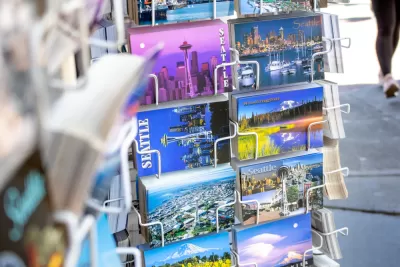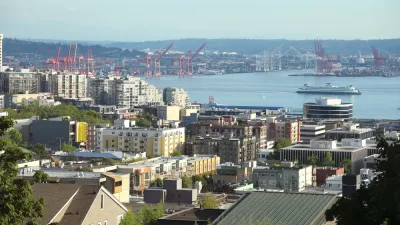With several years of contentious political debates, many surrounding homelessness, ravaging Seattle, a writer attempts to explain how the politics of city building got so heated.

Election campaigns are in full swing in Seattle, and Crosscut columnist Katie Wilson pauses to examine, "albeit speculatively," at the psychic forces setting the tone for politics in the city.
Wilson sets the infamous Ballard town hall of 2018—"the day Seattle Nice died"—as a defining moment for "enraged NIMBY" politics in the city, quickly connecting the movement to a core demographic (i.e., generational) experience:
Although I hope and believe this specimen is still rather rare, even in Ballard, it’s worth examining as a kind of archetype; NIMBY rage is the distillation of a set of feelings and opinions that also resonate, if less strongly, with a much broader swath of the population. This broader group is not all older, or all white, or all homeowners, but that’s their core demographic, and the archetypal enraged NIMBY is most definitely an older white homeowner. And this core demographic shares a core experience, which is in many respects a generational experience.
The core generational experience Wilson describes is one of a social contract, reached through numerous ill means, under threat by homelessness, soaring costs, and the looming environmental disaster of climate change. Millennials, more accustomed to the risks and threats of the era, have reacted differently than Baby Boomers to the changing times.
Wilson also calls out a few specifically loud voices in the ensuing debate, like People for Seattle and Moms for Seattle, the former led by former Mayor Tim Burgess.
FULL STORY: Adrift and afraid, Seattle's outraged NIMBY needs someone to blame

Alabama: Trump Terminates Settlements for Black Communities Harmed By Raw Sewage
Trump deemed the landmark civil rights agreement “illegal DEI and environmental justice policy.”

Planetizen Federal Action Tracker
A weekly monitor of how Trump’s orders and actions are impacting planners and planning in America.

The 120 Year Old Tiny Home Villages That Sheltered San Francisco’s Earthquake Refugees
More than a century ago, San Francisco mobilized to house thousands of residents displaced by the 1906 earthquake. Could their strategy offer a model for the present?

Indy Neighborhood Group Builds Temporary Multi-Use Path
Community members, aided in part by funding from the city, repurposed a vehicle lane to create a protected bike and pedestrian path for the summer season.

Congestion Pricing Drops Holland Tunnel Delays by 65 Percent
New York City’s contentious tolling program has yielded improved traffic and roughly $100 million in revenue for the MTA.

In Both Crashes and Crime, Public Transportation is Far Safer than Driving
Contrary to popular assumptions, public transportation has far lower crash and crime rates than automobile travel. For safer communities, improve and encourage transit travel.
Urban Design for Planners 1: Software Tools
This six-course series explores essential urban design concepts using open source software and equips planners with the tools they need to participate fully in the urban design process.
Planning for Universal Design
Learn the tools for implementing Universal Design in planning regulations.
Clanton & Associates, Inc.
Jessamine County Fiscal Court
Institute for Housing and Urban Development Studies (IHS)
City of Grandview
Harvard GSD Executive Education
Toledo-Lucas County Plan Commissions
Salt Lake City
NYU Wagner Graduate School of Public Service





























